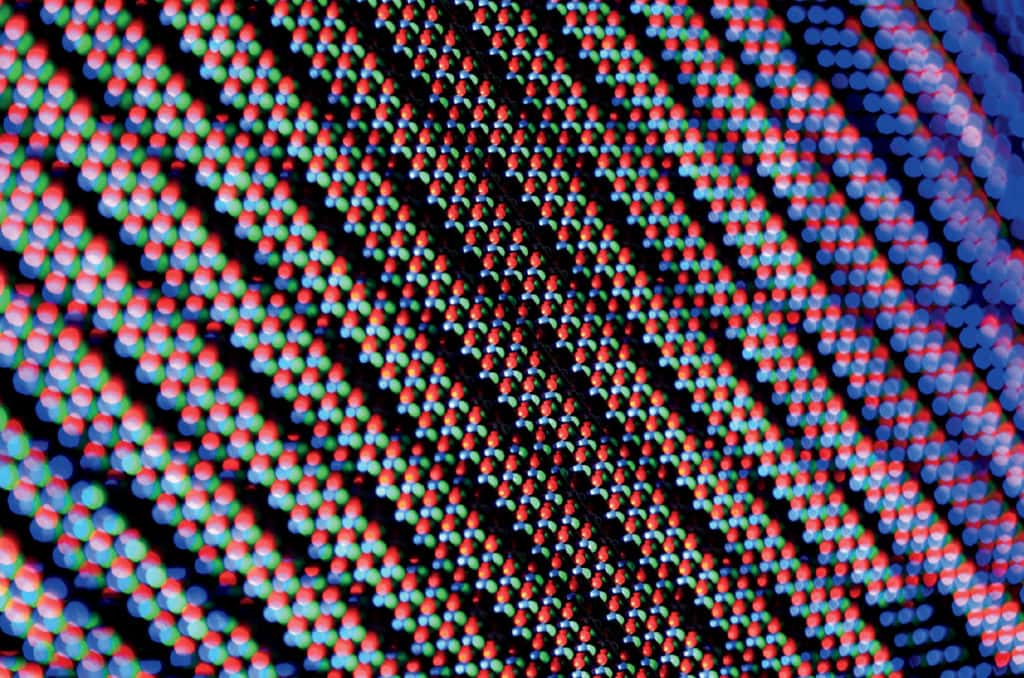
APEX Insight: A lot of science goes into what we hear, see, touch, smell and taste in the airplane cabin. In this multipart feature, we take a look at recent developments targeted at each of the five senses.
For the last decade, progression in video-screen technology revolved around some version of “How big can this TV get?” but that has finally changed with the rise of MicroLED displays. One of the main challenges in developing these smaller LED lights lay not in shrinking the individual light-emitting diodes, but in making sure they could maintain enough brightness to be useful. Another issue was shrinking the distance between these tiny lights: It’s easier to build a MicroLED mega-screen for a football stadium than it is to make a smartphone display.
MicroLED is the technology behind projector-less cinema screens, such as the 34-foot behemoth unveiled by Samsung in 2017. At CES 2018 in Las Vegas, the electronics giant introduced a home-theater version, called The Wall, whose screen measures a peripheral-vision-challenging 146 inches. Looking beyond simple video screens, Rockwell Collins uses MicroLEDs to power its Secant cabin lighting solution, capable of transforming curved surfaces into custom ambient environments.
“It took a bit of time before LEDs in the aircraft cabin were fully embraced,” says Stephen Scover, vice-president and general manager of Lighting at Rockwell Collins. “I think MicroLEDs represent an entirely new generation of product, but the difference now is that the widespread acceptance of LEDs as an illumination technology is universal. MicroLEDs will springboard off this point of commonality and they will proliferate throughout the aircraft, providing a medium for lighting, advertising, entertainment and custom applications.”
“MicroLED technology is very well suited for IFE [in-flight entertainment] screen technology” – Stephen Scover, Rockwell Collins.
Meanwhile, Apple is reportedly moving away from OLED technology (which you currently see on the iPhone X and Apple Watch) toward MicroLED displays, which are 50 percent more efficient and less expensive to produce. This suggests the technology’s suitability for seatback screens is maturing. “MicroLED technology is very well suited for IFE [in-flight entertainment] screen technology,” Scover says, “but we do not anticipate working within that market segment. Our target market leans more toward innovations in lighting technologies to supply an enhanced cabin ambience for our customers.”
Indeed, two of MicroLED’s game-changing attributes are color fidelity and wider flexibility in viewing angle compared with traditional LCD arrays. This opens new vistas for ambience and interactivity that go far beyond the TV screen. “We have secured two launch customers, and the end use of the Secant product is completely different for each customer,” Scover says. “We believe this provides the evidence that the applications are endless.”
“The Sensory Experience” was originally published in the 8.4 August/September issue of APEX Experience magazine.


